The Simple At-Home Skincare Routine That Can Banish Acne For Good
"Hearst Magazines and Yahoo may earn commission or revenue on some items through these links."
Sad, but true: Acne doesn’t magically disappear once you graduate high school or turn 21. In fact, more than 25% of women and 12% of men in their forties regularly battle breakouts. And with just 10% of Americans seeing the inside of a dermatologist’s office last year, it’s clear a lot of that battling is happening in our bathrooms at home. And when you go it alone, there are lots of questions: Do hormones play a role in acne? Yes. Can an aesthetician help me clear my acne? Maybe. Why do I keep getting a pimple in the same spot? It may be a cyst.
But the biggest question you’re likely pondering is: What is the best acne-fighting skincare routine?
For starters, routine is the operative word here: “Acne is a chronic multi-factorial skin disease, so treating it is never about using just one ingredient,” says Shari Marchbein, MD, a dermatologist who specializes in adult female acne and assistant professor of clinical dermatology at NYU School of Medicine. “It’s about combining active ingredients together in order to target the different forms and causes of acne.”
Meet the experts: Shari Marchbein, MD, is a dermatologist who specializes in adult female acne and an assistant professor of clinical dermatology at NYU School of Medicine in New York, Nkem Ugonabo, MD, is an assistant professor of dermatology at Albert Einstein College of Medicine in New York, Bradley Glodny, MD, is a dermatologist who specializes in inflammatory skin conditions and an instructor of cosmetic dermatology at New York Presbyterian Columbia University Irving Medical Center in New York
With so many products out there claiming to keep your complexion in the clear, it comes as no surprise to me that consumers are confused about what to buy. Here, Marchbein and other top dermatologists share the definitive guide to the best acne-fighting skincare routine.
What is acne—and what causes it?
It’s quite simple to wrap your head around, actually: “Acne is a disorder of the sebaceous glands, which are responsible for secreting oil," says Nkem Ugonabo, MD, assistant professor of dermatology at Albert Einstein College of Medicine. "These glands can get clogged, resulting in the pimples and cysts we see on our face and neck, on our chest and back, and even on our butt.”
What’s not as simple is pinpointing exactly what’s behind the clogging. “There’s typically thought to be a number of contributing factors which cause acne, including the general oil makeup of your skin, genetics, dirt and skin debris, sweat, hormones, bacteria and even fungus, stress, medications, and heavy emollients to name a few,” explains dermatologist Bradley Glodny, MD, who specializes in inflammatory skin conditions and is an instructor of cosmetic dermatology at New York Presbyterian Columbia University Irving Medical Center.
Also important to note: “Women are generally more prone to acne breakouts mostly due to their menstrual cycle and sensitivity to certain androgenic hormones,” says Dr. Glodny. “Oftentimes, multiple family members will experience severe acne, leading me to believe that genetics play a large role in who will develop clinically significant acne.” There’s also some research that shows diet—dairy, in particular—can exacerbate breakouts.
Acne can manifest as several different types of lesions and it’s not uncommon to develop all of them, even during the same breakout, says Dr. Glodny. Some of the most common types are:
Comedones: The most common of these are whiteheads and blackheads, which occur when dirt and oil block the opening of pores. Whiteheads, or closed comedones, typically appear as inflamed red or pink bumps with a white core. Blackheads, on the other hand, are open comedones, meaning the gunk clogging your pore becomes exposed to air and oxidizes (that’s what causes their black appearance).
Papules: Solid raised red bumps caused by pore-clogging dirt, oil, and bacteria.
Pustules: These pus-filled bumps are similar in appearance to whiteheads but are also filled with bacteria and can be tender to the touch.
Cysts: Deeper and more painful, these lesions are typically hard to the touch and occur when the clogging penetrates deeper into skin.
The best skincare routine to fight acne
The experts I spoke with are unanimous: The best acne-fighting skincare is ideally devised in consult with a board-certified dermatologist. Only your derm can determine which kind of acne you’re plagued with—and what the best solutions will be.
That will likely include a prescription treatment. “These can include topical and oral antibiotics or prescription retinoids like tretinoin and—when the acne is severe and cystic—isotretinoin, formerly known as Accutane,” says Dr. Marchbein. “It’s also important to understand that hormones play a big role in women experiencing acne, so oral contraceptive pills and anti-hormonal medications like spironolactone can be highly effective.”
And while you’re likely focused on coming up with a routine that eradicates your acne, you also want to make sure you’re not choosing products that will make breakouts worse. That means making sure everything that touch your skin is labeled as noncomedogenic. “Noncomedogenic means that the product is free of ingredients that can clog your pores,” Dr. Ugonabo says. “It’s important to look for this term as well as the phrase ‘oil-free’ so that you are not using any products that could potentially cause more breakouts.”
Here's the surefire step-by-step:
Step 1: Cleanse gently
Oftentimes, aggressive washing—something you may be tempted to do if you have oily, acne-prone skin—can aggravate your complexion, which is why Dr. Marchbein generally recommends using a gentle cleanser as your first step in the morning. Look for non-foaming formulas or those labeled ‘hydrating’ or ‘moisturizing.’
If you prefer a more streamlined approach, you can combine steps one and two by using a medicated cleanser instead, suggests Dr. Glodny. His recommendation: If you’re dealing with comedonal acne (reminder: that refers to whiteheads and blackheads), opt for a wash with salicylic acid, a tried-and-true breakout buster that gentle exfoliates away dirt and oil to unclog pores.
Your other option, says Glodny, is to use a product with benzoyl peroxide. This ingredient has anti-bacterial properties and is best used on “red, more inflamed lesions,” he explains.
Step 2: Use an acne treatment product
Have you opted for the gentler approach to cleansing? Then this would be the time to use your treatment product. You have several options here, the most common of which are, again, benzoyl peroxide and salicylic acid. Over the counter, you’ll typically find salicylic acid in formulations at 2%, with BP falling within a range of anywhere from 2.5% up to 10% (it can be irritating to skin, so it’s best to start low and work your way up to a higher percentage).
If you’ve been to the drugstore lately, you’ve no doubt seen countless spot treatment products or patches. Proceed with caution. As Marchbein says, “I’m generally not a fan of spot treating. You want to apply a product to your entire face so that you’re not only treating the active breakouts you see in the mirror, but you’re also working to prevent new ones from forming.”
Step 3: Slather on a moisturizer with SPF
You may be tempted to skip sunscreen when you have an acne-prone complexion, but that would be a mistake. In fact, research shows that environmental factors like solar radiation can not only trigger acne, but they can also increase the likelihood that your acne will lead to skin discoloration and scars, a phenomenon known as post-inflammatory hyperpigmentation.
The predicament: Many sunscreens can feel greasy on skin—not exactly an appealing attribute for someone who may already be dealing with a complexion that tends toward the oilier side. The key is to look for a sunscreen designed for acne-prone skin—that usually means one labeled noncomedogenic, says Dr. Glodny. Thankfully, many of the newer mineral formulas have a velvety, slightly matte finish. Bonus points if your SPF of choice also contains vitamin C, an ingredient that can help with discoloration, says Dr. Marchbein.
Step 4: Cleanse again at night
Before bed, wash the day away. Listen to your skin—if you’re not experiencing any irritation, both Drs. Marchbein and Glodny recommend lathering up with a cleanser that contains salicylic acid (reminder: this beta hydroxy acid is a pro at cutting through pore-clogging oils and getting rid of dirt). If your skin is acting a little cranky, go with a gentle cleanser instead.
Step 5: Use a retinoid
Nighttime is the right time for retinoids, whether it’s a medication prescribed by your dermatologist or an over-the-counter retinol serum. “Retinoids really are the backbone of any acne routine in that they treat all acne lesions, including inflammatory papules and pustules, comedones and even microcomedones, which are the precursor lesion to all other acne breakouts,” Dr. Marchbein says. “Retinoids can help treat acne blackheads and clogged pores by speeding up the rate at which skin regenerates and sloughing away the keratinocytes, which are cells on the outermost layer of skin.”
Some of Marchbein’s favorite prescription retinoids include tretinoin, Retin-A, and Tazorac, all of which vary in strength and tolerability based on the needs of each patient. Your doctor will likely recommend using them three times weekly to start since they can cause dryness and increasing to every night as tolerated. You can also use an OTC product with retinol or adapalene, like Differin gel. One study found that combining retinol with 2.5% benzoyl peroxide (participants used the BP in the morning and the retinol at night) showed a significant reduction in acne lesions after 12 weeks.
Step 6: Moisturize
Last but not least, slather your skin in a non-comedogenic moisturizer—a non-negotiable, according to all of the experts I spoke with. “This is so important,” says Dr. Glodny. “You must moisturize after applying your retinoid to minimize any potential irritation.”
Gentle Cleanser
This noncomedogenic wash removes built up dirt and oil while replenishing skin with allantoin and calming with orange oils.
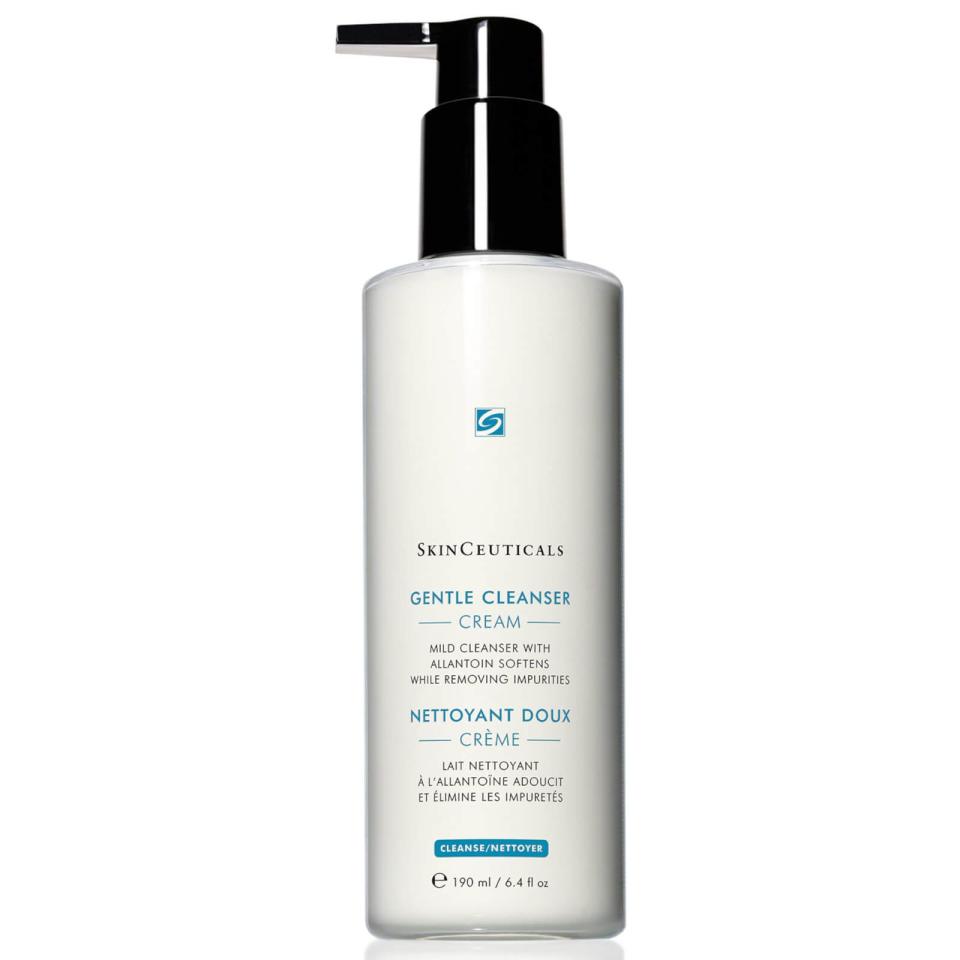
Gentle Cleanser
dermstore.com
$39.00
Clear Daily Skin Clearing Treatment
With 5% anti-bacterial benzoyl peroxide this whole-face treatment treats and prevents acne without over-drying skin.
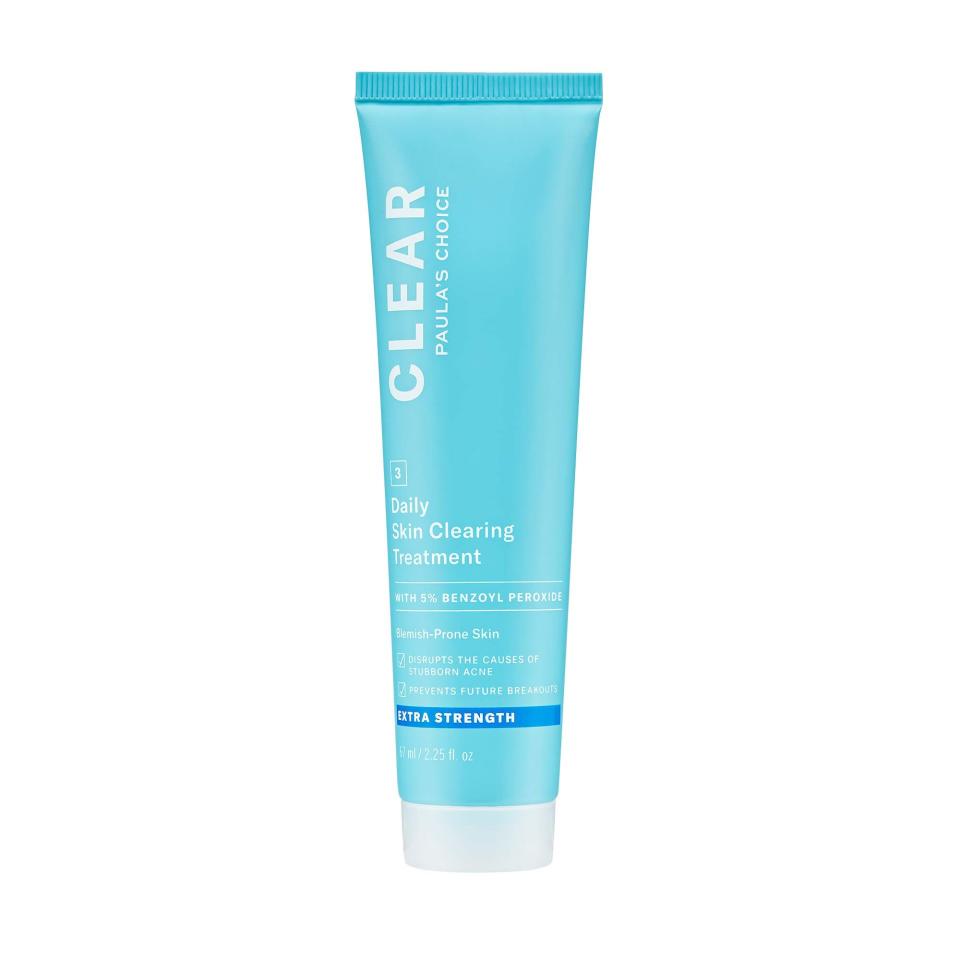
Clear Daily Skin Clearing Treatment
amazon.com
$23.00
EltaMD UV Clear Broad-Spectrum SPF 46
An SPF specifically designed for those with acne, this formula is noncomedogenic, provides broad spectrum protection, and contains niacinamide to calm redness and inflammation.
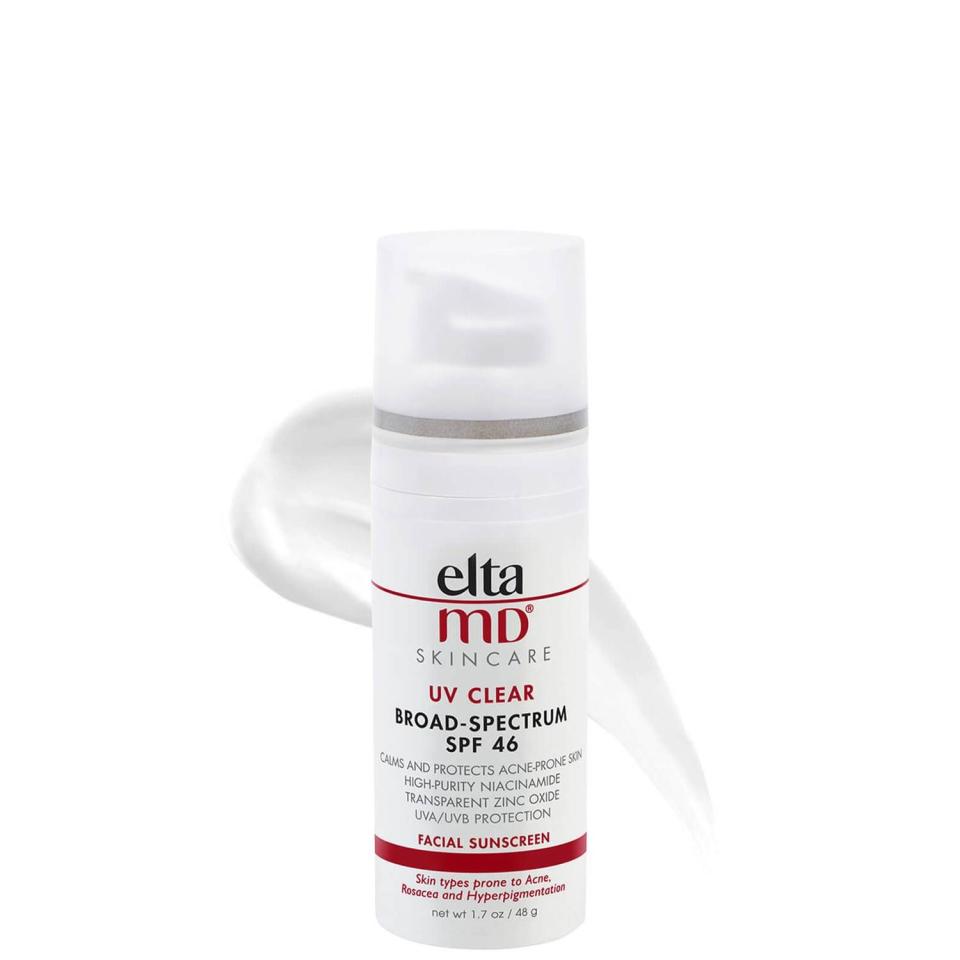
EltaMD UV Clear Broad-Spectrum SPF 46
dermstore.com
$37.00
Acne Control Cleanser
Formulated with 2% salicylic acid to cut through pore-clogging dirt and oil, this wash also contains barrier-repairing ceramides and niacinamide to heal and calm.
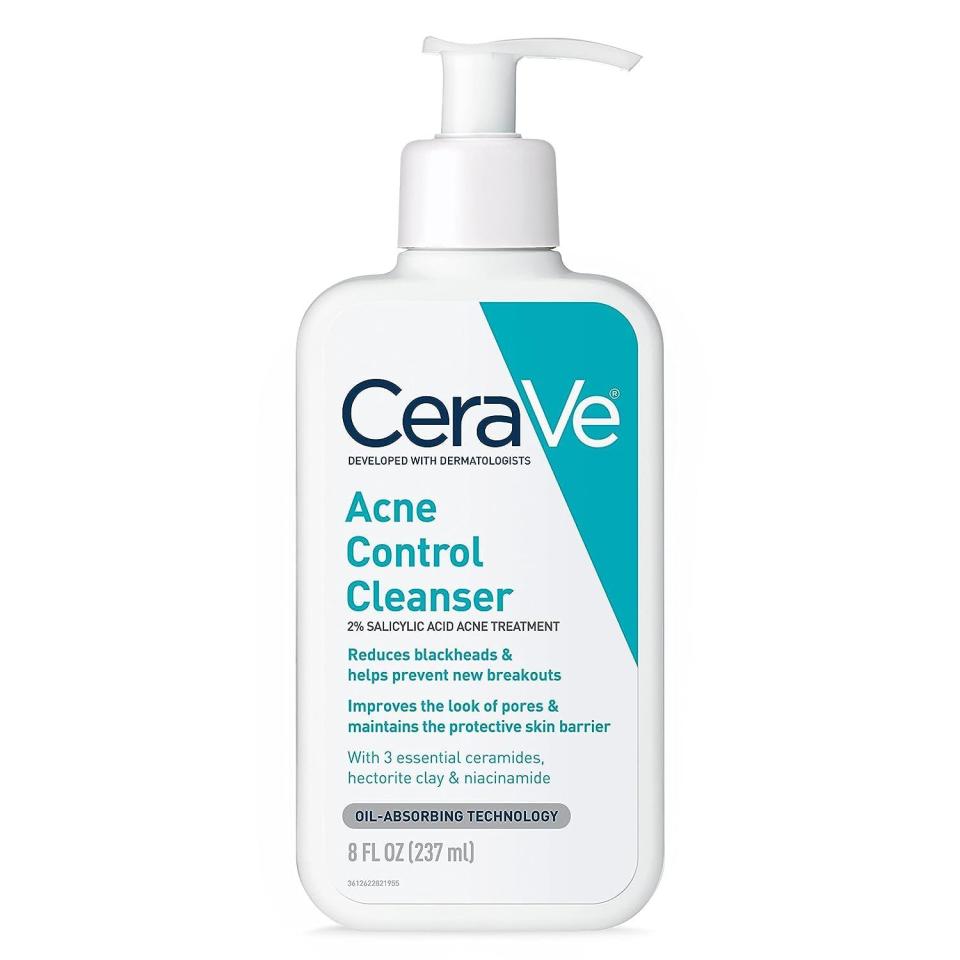
Acne Control Cleanser
amazon.com
$14.99
Retinol 1.0 Complex
An advanced retinol serum to improve the signs of photoaging and help to clear acne. Remember: Start slowly, using once or twice per week, and gradually increase the number of times you slather it on.
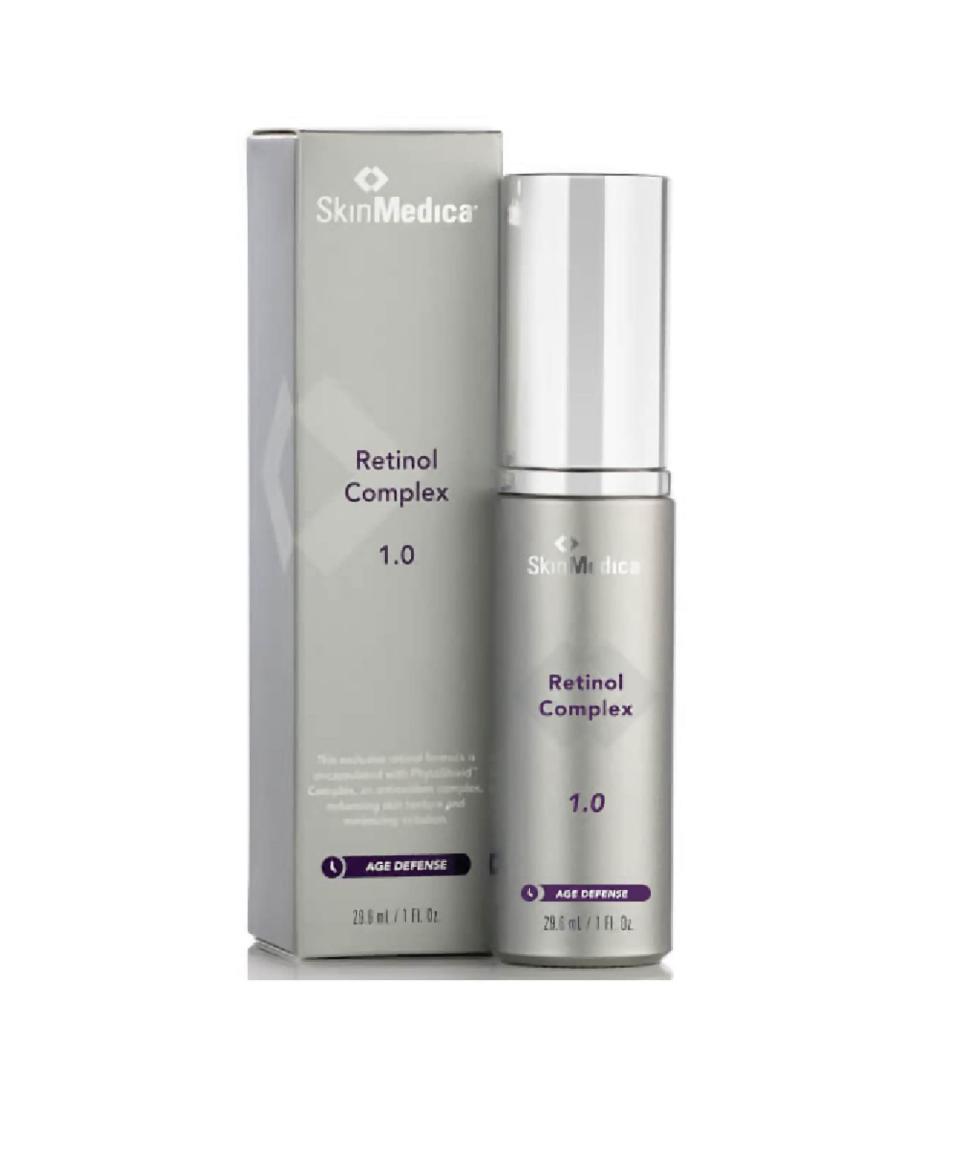
Retinol 1.0 Complex
amazon.com
$76.80
PM Balancing Repair Moisturizer
A nighttime cream that won't clog pores and helps to repair skin's protective barrier (a must if you're using strong acne actives) with niacinamide, ceramides, and hyaluronic acid.
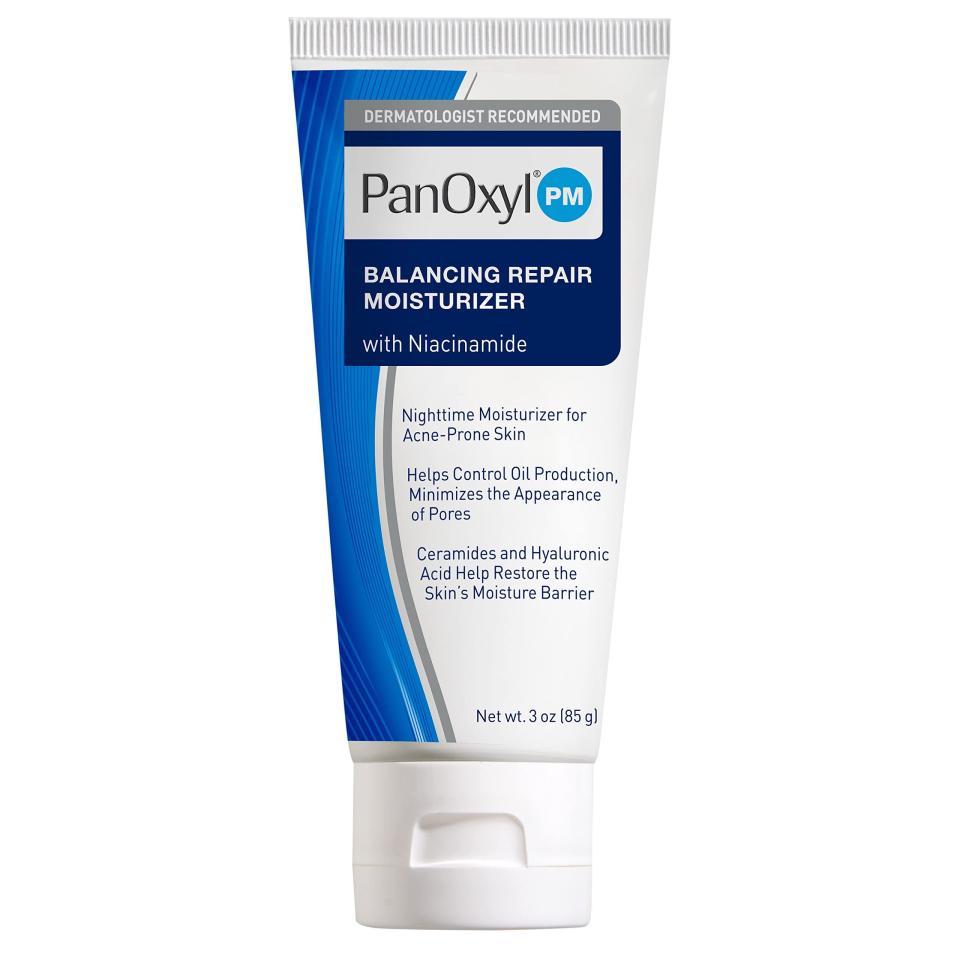
PM Balancing Repair Moisturizer
amazon.com
$10.48
The bottom line
When treating acne, patience is a virtue. “You may begin to see results in four to six weeks, but it can take up to three full months to notice significant clinical improvement,” Dr. Marchbein explains. She’d also like you to level-set your expectations and seek the help of a professional when necessary: “Over the counter acne treatments are great to try and best suited for mild acne. But if you’re experiencing post inflammatory hyperpigmentation or scarring or even more aggressive breakouts, seek care from a board-certified dermatologist for a more extensive and aggressive prescription routine.”
And remember: Acne and the scarring that can result from it can be emotionally and physically debilitating, so don’t go it alone.
You Might Also Like

